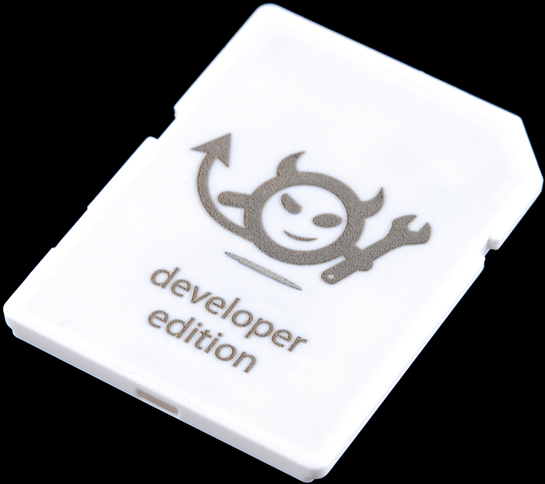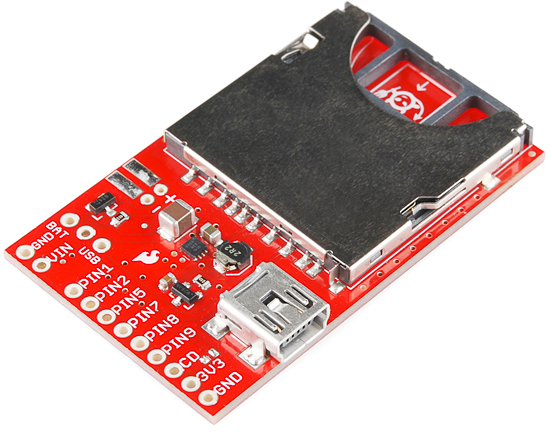Retired - Electric Imp Breakout Hookup Guide v2
This Tutorial is Retired!
This tutorial covers concepts or technologies that are no longer current. It's still here for you to read and enjoy, but may not be as useful as our newest tutorials.
impRoduction
The electric imp is a deviously awesome development platform. Disguised as an every day SD card, the imp is actually a unique combination of microprocessor and WiFi module. The imp makes connecting any device to the Internet a breeze. Looking to catch on with this "Internet of Things" fad? The imp is an excellent place to start.
In this tutorial, we'll be explaining how to use the imp with one of our Breakout Boards. This simple PCB assembly houses the bare minimum you might need to get an imp up-and-running. First, we'll cover how to hook up the hardware end of the imp/Breakout combo. Following that we'll head over into the firmware domain, programming the imp to blink LEDs and read analog and digital inputs. The last code example shows off the coolest part of the imp: controlling hardware over the Internet!
Requirements
Of course, you'll need an imp and a Breakout Board. Aside from those two parts, we'll use a few common electronics parts you may already have. Here's a wishlist of everything we'll be using. If you'd like to use some parts you may already have around the house
In addition to those items, you'll also need the following non-SparkFun materials:
- Wireless network with Internet access
- electric imp planner account (sign up is free/easy)
- electric imp planner website pulled up in your web browser
- SmartPhone w/ the electric imp app (Android or iOS)
Tools
There will be some soldering involved. The Breakout Board does not come with header pins soldered on, which you'll need in order to interface with the imp's I/O pins. You'll need a simple soldering iron and a bit of solder. (If you've never soldered before, this is a great place to start! The solder points are easy, through-hole jobs.)
Before We Begin
This tutorial builds upon some basic electronics concepts. If you aren't familiar with any of the topics below, consider reading through that tutorial first:
- How to Solder - Through-hole
- How to Power a Project
- Voltage Dividers
- Pulse Width Modulation
- Light-emitting Diodes
Aside from the imp's programming language, Squirrel, there will be a variety of coding languages used in later parts of this tutorial -- primarily HTML and Javascript. Don't worry if you're not too familiar with those, as the examples aim to be short, sweet, and easy-to-modify.
Let's start by overviewing the imp card itself. It's hard, at first, to wrap your head around the fact that this little, white SD-looking card is actually a powerful WiFi-enabled microcontroller platform.

